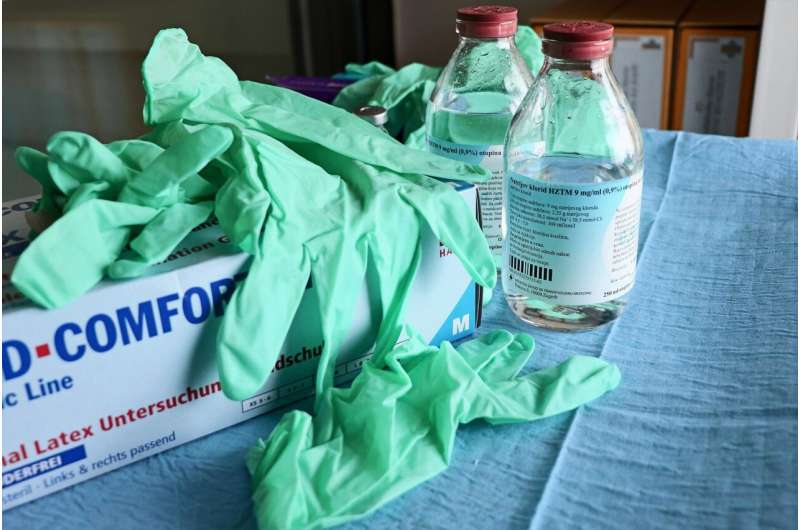Credit: Pixabay/CC0 Public Domain
Temporary isolation wards utilized to house COVID-19 patients at a large Singapore hospital during the global pandemic allowed for safe management of COVID-19 cases over an 18-month period, without health care-associated SARS-CoV-2 transmission. The study finding, published today in the American Journal of Infection Control (AJIC), suggests that these wards can provide a safe option for managing patients during future pandemics caused by a novel respiratory pathogen.
"This study provides important information that supports the safety of temporary isolation units—which became a critical option for many health care facilities worldwide during the COVID-19 pandemic—and can inform practice during subsequent pandemics," said Wee Liang En Ian, Associate Consultant in the Department of Infectious Diseases at Singapore General Hospital (SGH), one of the paper's lead authors. "Despite environmental SARS-CoV-2 contamination observed in the temporary isolation wards at our institution, we found no evidence of transmission to health care workers over a prolonged period."
During the COVID-19 pandemic, demand for airborne infection isolation rooms to safely manage patients with the disease often outstripped availability. Many health care facilities created temporary isolation wards at the peak of the pandemic to provide surge-capacity. However, there has been very little research evaluating the effectiveness of these wards in managing COVID-19 cases.
During the 18-month period from July 2020 to December 2021, Dr. Wee and colleagues conducted environmental sampling for SARS-CoV-2 RNA in temporary isolation wards constructed from prefabricated containers (N=20) or converted from normal-pressure general wards (N=47) at SGH. The researchers completed sampling at the point of patient discharge/transfer out and prior to terminal cleaning. During this period, the hospital also conducted contact tracing, active surveillance, and whole genome sequencing (WGS) for all COVID-19 cases among hospital health care workers (HCWs).
Researchers collected and evaluated a total of 355 environmental swabs and determined that 22.4% (15/67) of patients had at least one positive sample. As compared to patients in the converted isolation wards, patients housed in isolation rooms constructed from prefabricated containers had greater odds of detectable environmental contamination (adjusted-odds-ratio, aOR=10.46, 95%CI=3.89-58.91, p=0.008), with the majority of positive environmental samples obtained from the toilet area (60.0%, 12/20) and another substantial portion from patient equipment, including electronic devices used for patient communication (8/20, 40.0%). Among patients in the converted temporary isolation wards, environmental contamination was also detected most frequently in the toilet area (17.0%, 8/47), while only 4.3% (2/47) of these patients had positive samples from patient equipment (call-bell).
During the study period, SGH reported 441 cases of COVID-19 infection among HCWs, 5.7% (25/441) of which were among HCWs working in any of the hospital's COVID-19 isolation areas. While seven of these cases occurred among HCWs working in the temporary isolation wards, WGS and epidemiological investigations provided no evidence of patient-to-HCW or HCW-HCW transmission.
"This study suggests that with the right combination of infection prevention practices, including well-designed isolation units, appropriate cleaning processes, compliance with prevention protocols and appropriate use of personal-protective-equipment, temporary isolation units are a viable option to help safely manage patients during respiratory disease outbreaks," said Linda Dickey, RN, MPH, CIC, FAPIC, 2022 APIC president.
More information: Environmental contamination and evaluation of healthcare-associated SARS-CoV-2 transmission risk in temporary isolation wards during the COVID-19 pandemic, American Journal of Infection Control (2022). DOI: 10.1016/j.ajic.2022.09.004
Journal information: American Journal of Infection Control
Provided by Association for Professionals in Infection Control
























